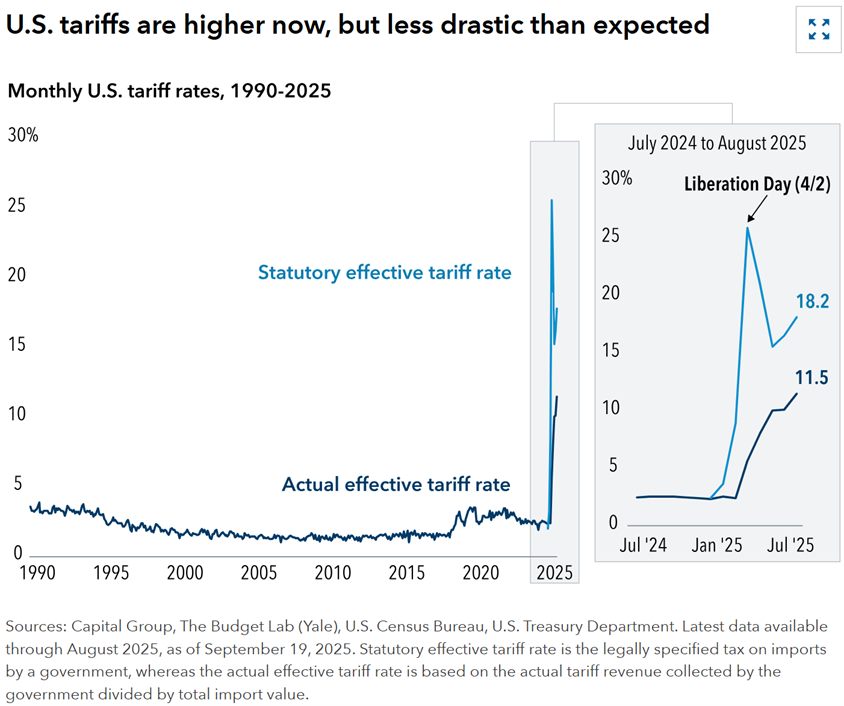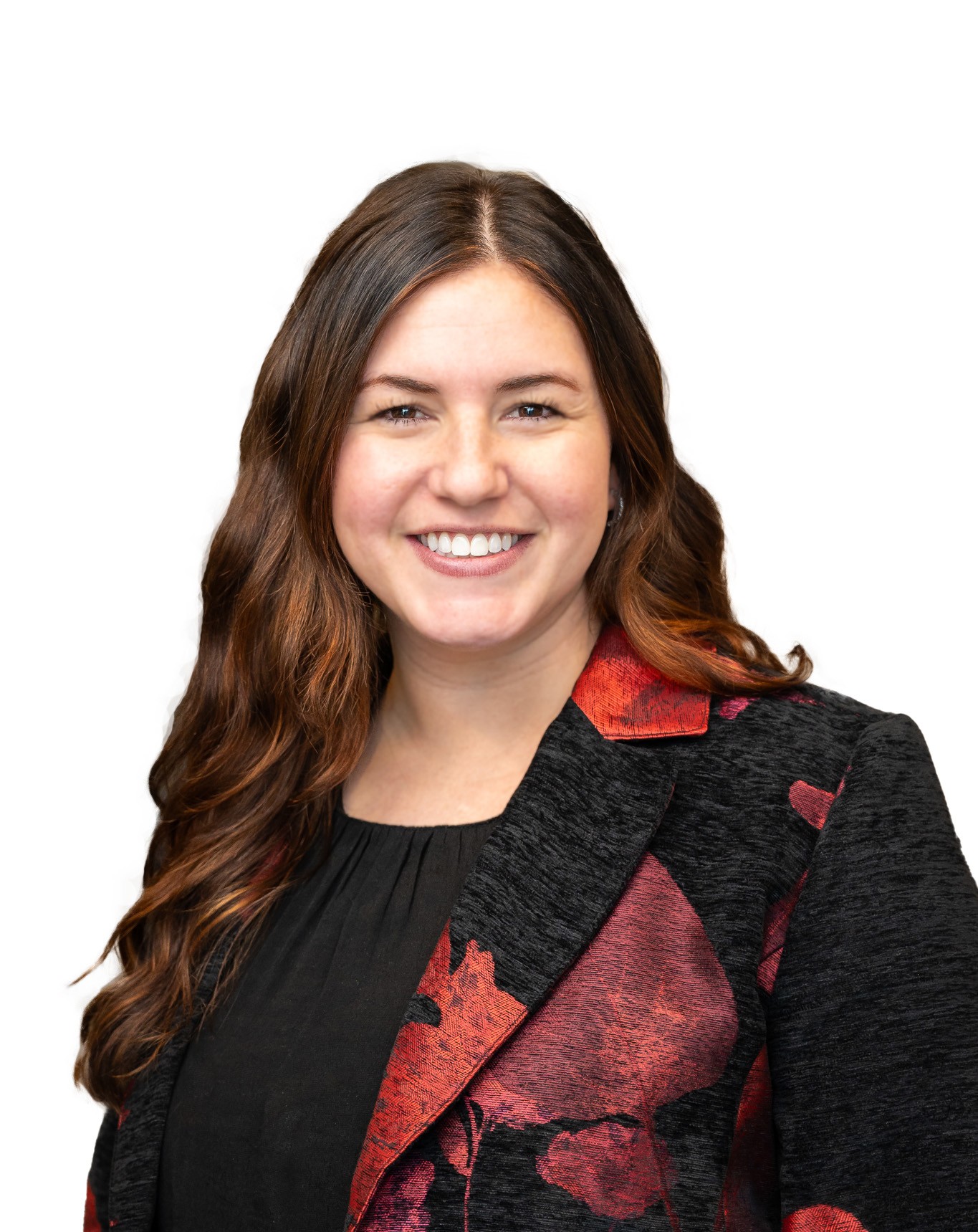Your Q3 2025 Market Check-In
Dear Wela Clients,
As we close the books on Q3 2025, we are pleased to provide our thoughts on last quarter’s developments — and share a few practical steps to consider as we head into year-end.
In this edition, we explore six themes shaping portfolios today:
1. Uncertainty as the new economic normal
2. Tariff turbulence (and why the sky hasn’t fallen)
3. Cooler growth expectations into late 2025
4. The Federal Reserve’s “wait and see” stance
5. The fixed-income playbook
6. Opportunities in equities
We’ll start at the top of the list, because the rest flows from it.
1) The economy: uncertainty is the new normal
Policy headlines have been the market’s metronome this year: tariff proposals, funding debates and election-season noise created a steady drumbeat of “What next?”.
For investors, the key is separating signal from static.
History and data around government shutdowns help put things into perspective. Research shows that even longer shutdowns have tended to leave only small, temporary ripples in stocks and bonds, with markets often recovering once the funding spigot reopens.

Translation: policy disruptions matter for sentiment and data flow, but they rarely justify wholesale portfolio shifts on their own. Stay diversified, keep your time horizon intact, and let fundamentals do the heavy lifting
2) Tariff turbulence — much ado about nothing?
Tariffs returned to center stage in Q3, and the knee-jerk question was familiar: Will higher duties derail growth?
For now, the economy remains strong, and we identify five key reasons why tariffs have not wrecked the U.S. economy:
- Companies have rerouted supply chains
- Consumers have remained reasonably resilient
- Some costs were offset elsewhere in the system
- Not every tariff is fully passed through
- The economy is more adaptable than the headlines suggest.

None of that makes tariffs painless — they can still pressure margins and complicate planning — but the big picture is “manageable, not catastrophic.” For investors, that argues for discipline: use tariff-driven volatility to upgrade quality and rebalance, rather than abandoning a long-term plan.
3) Cooler growth expectations into late 2025
Put the two ideas above together and you get today’s backdrop: slow, yet sustainable growth. Corporate results underline the nuance. Analysts’ earnings reviews frame the consumer as “pickier, not gone.” Companies with pricing power and real relevance have continued to find demand, while those relying on across-the-board price hikes saw pushbacks.

It’s a reminder that, in a world of policy friction and selective demand, business quality — margins, balance sheets, and the ability to innovate — matters even more. As Charlie Munger would say, “a great business at a fair price is superior to a fair business at a great price”.
4) All eyes on the Fed — patient beats predictive
In a slower-but-still-growing economy with inflation gliding rather than plunging, the Fed has every reason to wait for clearer evidence. A prolonged shutdown mainly clouds the data the Fed relies on; tariffs can inject noise into prices and planning. Neither automatically changes fair value for long-term assets.

The practical takeaway: avoid building portfolios around a specific “rate-cut date.” Instead, build for a range — and let income, quality, and cash-flow durability carry more of the load until the path is clearer. This mirrors the historical lesson from shutdowns and other policy standoffs: markets usually refocus on fundamentals once the dust settles.
5) The fixed-income playbook: income-backed resilience
With the Fed patient and growth cooler, bonds earn their keep again — not as a prediction machine, but as a source of steady income and ballast.
- Core ballast first. High-quality core bonds remain a straightforward way to add stability around policy headlines and earnings season surprises. Think of this sleeve as your portfolio’s shock absorbers — especially helpful when Washington drama temporarily amplifies volatility.
- Be selective with credit. A mixed growth backdrop and tariff noise argue for an emphasis on resilient balance sheets and business models. Favor issuers with manageable refinancing needs and solid free cash flow; let credit selection do the work rather than stretching on quality purely for yield.
- Keep flexibility. Staggered maturity and a willingness to add duration on weakness can help you lean into volatility instead of running from it. The goal is simple: harvest dependable income today while staying nimble enough to pivot if the data or the policy track shifts.
6) Equity opportunities: beyond the usual suspects
Two equity truths stood out in Q3:
1. Breadth is improving
Leadership has been broadening beyond a small set of mega-cap tech names. Even traditionally overlooked pockets — like select European financials — have outpaced the “Magnificent 7” over the past year. For diversified investors, that’s healthy: more sources of return, less single-theme risk. If your equity sleeve drifted top-heavy in recent years, Q3 was a nudge to spread risk across sectors, styles, and regions again.

2. AI is shifting from sizzle to substance
The investment question is no longer “Is AI real?” but “Where does it create durable cash flow?” Analysts suggest thinking across layers: the enablers, such infrastructure, software platforms, utilities tied to data-center buildout, and the adopters, like companies using AI to improve productivity, service quality, and margins.

A measured and balanced ecosystem approach lets you participate without betting the farm on a single headline name.
A Growing Team
- In September, we added Rachel Gurinsky to the Wela team as an Associate Financial Planner. A proud San Antonio native and third-generation Texan, Rachel played soccer at St. Mary’s University, where she earned her B.B.A. in Marketing. She brings experience from JP Morgan Private Banking and 49 Financial, where she developed a strong foundation in client service and planning.
- At Wela, Rachel partners closely with our advisors and clients to strengthen relationships and deliver an exceptional planning experience — ensuring every client feels understood and supported.
- Outside of work, Rachel and her husband, Ryan, enjoy life with their newborn daughter, Kimberly, and their three dogs — Mocha, Bowie, and Mousse. They love spending time outdoors, hosting BBQs, and game nights with family and friends

Concluding Thoughts
- Volatility is the entry fee for long-run returns.
- Policy noise, selective consumers, broader equity leadership, and an AI theme moving from hype to utility argue for staying invested, diversifying, and making thoughtful, incremental improvements rather than reacting to every headline.
- If you’d like to discuss how these themes map to your goals, risk tolerance, and tax picture; please reach out to review your portfolio and make any appropriate adjustments for year-end. We are here to support and help you!
All the best,
Your Wela Financial Advisory Team
P.S.
Our 2025 Annual Client Appreciation Night is almost here! If you haven’t RSVP’d yet, there’s still time.
Join us Saturday, November 15th at 6:15 p.m. at The McNay Museum for cocktails, hors d’oeuvres, a plated dinner, and special performance by NYNY Dueling Pianos.
Brent Forrest & Associates, LLC. dba Wela Financial Advisory (Wela) is a registered investment adviser. Information presented is for educational purposes only. It should not be considered specific investment advice, does not take into consideration your specific situation, and does not intend to make an offer or solicitation for the sale or purchase of any securities or investment strategies. Investments involve risk and are not guaranteed. Be sure to consult with a qualified financial adviser and/or tax professional before implementing any strategy discussed herein.

